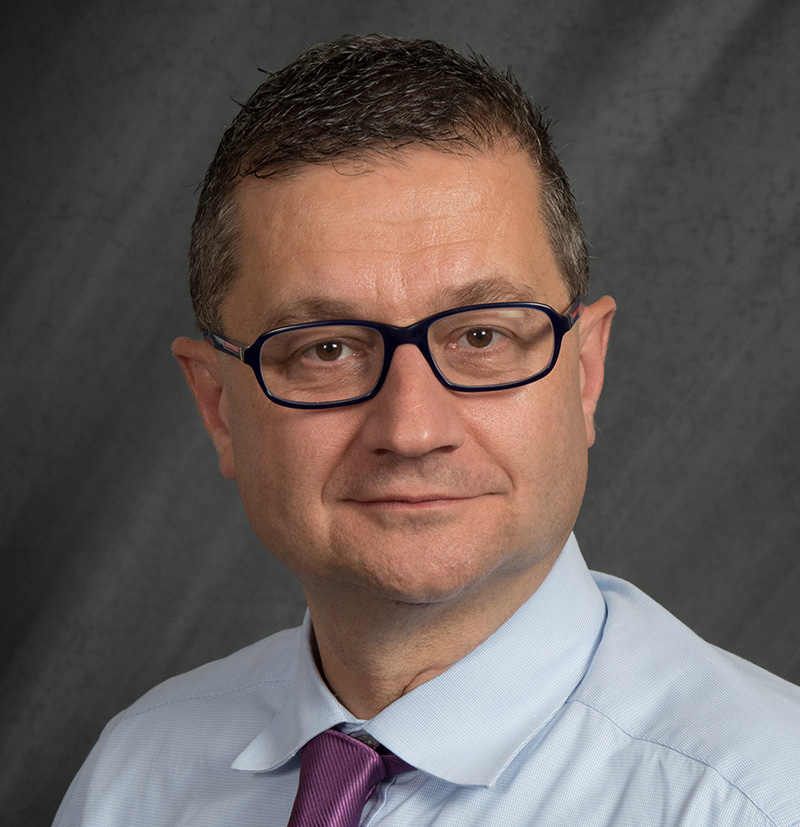Dr. Carlo Ercoli graduated from the “Enrico Berlinguer” Dental Technology Institute in Rome in 1987 and obtained his dental degree from the University of Siena, Italy in 1993. He specialized in Prosthodontics in 1996 at the Eastman Dental Center in Rochester, New York, where he also completed a one-year training in Temporomandibular Joint Disorders in 1997. In 2012, he achieved specialty certification in Periodontology at the University of Rochester Eastman Institute for Oral Health. He is currently Professor, Chairman and Program Director of the Prosthodontic Specialty Training Program at the University of Rochester, Eastman Institute for Oral Health and a faculty member of the Periodontology Program.
Dr. Ercoli is a diplomate of the American Boards of Prosthodontics and Periodontology, an ITI Fellow and holds memberships in several dental organizations including the American Academy of Periodontology, the American College of Prosthodontists, Academy of Osseointegration, American Academy of Fixed Prosthodontics, Greater New York Academy of Prosthodontics and American Prosthodontic Society. He is a Past President of the American Prosthodontic Society, Executive Council Member of the Academy of Prosthodontics and The Journal of Prosthetic Dentistry and a Honorary Member of the Italian Academy of Prosthodontics.
He maintains a faculty practice limited to Prosthodontics and Periodontics. He has lectured nationally and internationally on several topics related to clinical prosthodontics and implant dentistry.
Click here for abstract:
 Occlusion, loading, and overloading in implant dentistry: from biology to biomechanics to clinic, critically
Occlusion, loading, and overloading in implant dentistry: from biology to biomechanics to clinic, critically
Concepts of dental occlusion in implant dentistry are generally anecdotal in nature as they are often “borrowed” from “less than evidence-based” occlusal concepts used to define what is normal or abnormal in the natural dentition or from clinical guidelines used for prosthetic rehabilitation. Yet, loading of prostheses and dental implants is real and occurs every day in our practices causing varying degrees of success or failure of our implant restorations. An adequate understanding of how loading affects our prostheses and implants is further complicated by the dynamic nature of bone modeling and remodeling especially in immediate loading application, where wound healing could be affected by mechanical factors.
While there is a need to translate quasi-static and ill-defined concepts (i.e. overloading, long-axis loading, lateral forces) into biological and mechanical dynamics describing bone reactions, it is without a doubt that the application of excessive forces clearly affects the longevity of our prostheses and causes technical complications. This talk will review the basic understanding of how forces affect dental implants and the surrounding bone while discussing how to clinically minimize the occurrence of prosthetic complications, especially for full-arch applications.
 Pragmatic surgical and prosthetic solutions for simple and complex implant cases
Pragmatic surgical and prosthetic solutions for simple and complex implant cases
Successful dental implant treatment relies on sound, evidence-based, surgical and restorative treatment planning and execution and it is often due to improper diagnosis and treatment planning that “hard-to-treat”, preventable complications occur. While the development of appropriate protocols for implant planning and placement, hard and soft tissue grafting, loading protocols, and adequate prosthodontic management can generally predict the final esthetics and function of most complex cases, the clinician is often faced with complex, expensive and multi-level choices on which surgical and prosthetic solutions to adopt. This talk will describe several complex cases where practical and cost-effective surgical and prosthetic solutions have allowed the clinician to provide high patient satisfaction with an evidence-based, yet pragmatic and clinically convenient approach.


